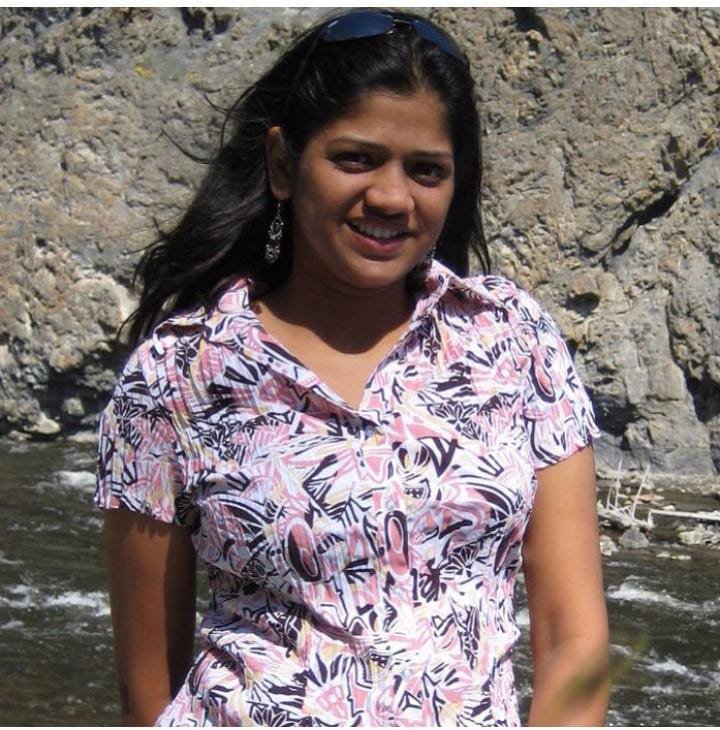Some treks challenge your body. And then some treks challenge your soul. The Chadar Trek is unequivocally the latter. It’s a journey so surreal, so demanding, and so utterly primordial that it changes the very definition of what you think is possible. This isn’t just a walk in the mountains; it’s an expedition across a frozen, breathing entity—the Zanskar River in the heart of winter.
For years, I had seen the photos: trekkers looking like tiny specks on a vast sheet of ice, dwarfed by the colossal, rust-colored canyon walls of Ladakh. It looked like a scene from another planet. It was a trek that lived in the realm of myth for me, a bucket-list item whispered with a mixture of reverence and fear. Last winter, I finally answered its call.
This guide is not a simple itinerary. It’s the story of my journey, the lessons I learned the hard way, the mistakes I made, and the moments of pure, unadulterated magic that are now etched into my memory. If you’re contemplating this trek, I want to give you the one thing I craved before I went: an honest, on-the-ground perspective. So, brew a hot cup of tea, and let’s walk on water together.
About the Author:Hi, I’m V. I’ve spent over a decade chasing adventures, from the rainforests of the Western Ghats to the high passes of the Himalayas. But no trail has ever tested me—or rewarded me—quite like the Chadar. It demanded a new level of respect, preparation, and mental fortitude. This guide is my attempt to distill that intense experience into practical, trustworthy advice for anyone brave enough to follow the path of the frozen river.
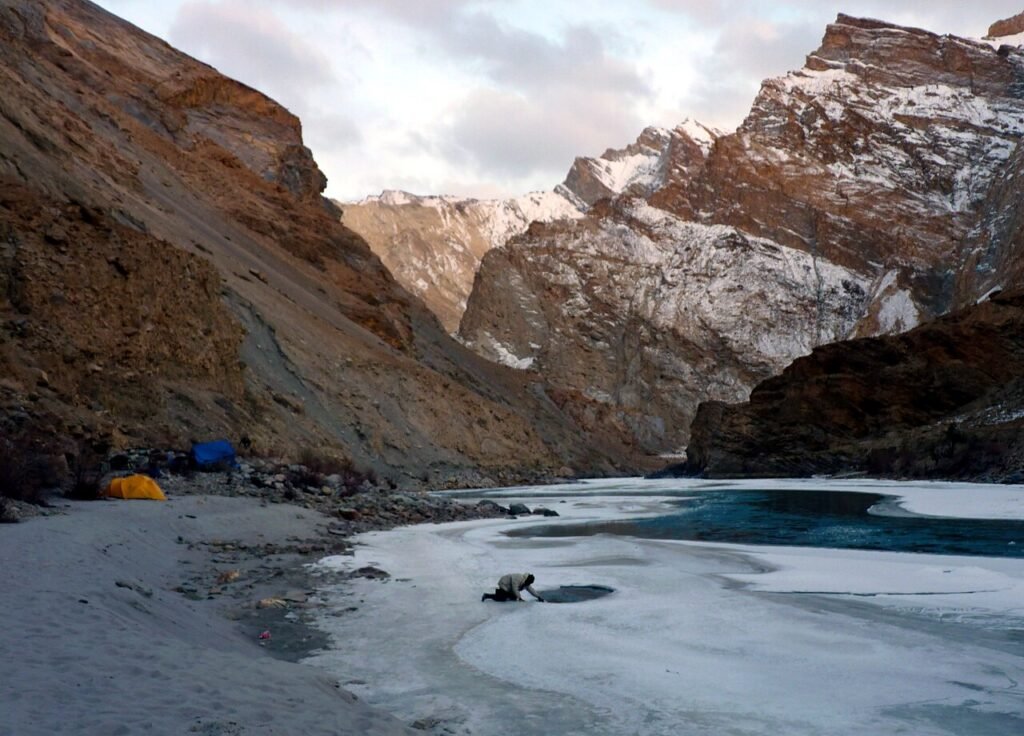
Chadar Trek: The Cold, Hard Facts
| Attribute | Details |
| Location | Zanskar Valley, Ladakh, India |
| Trek Distance | Approx. 60-75 km (depending on conditions) |
| Maximum Altitude | ~11,123 feet (3,390 meters) |
| Average Temperature | -10°C to -15°C (Day), -20°C to -30°C (Night) |
| Difficulty Level | Difficult (High on endurance and mental grit) |
| Ideal Duration | 9-10 days (including crucial acclimatization in Leh) |
| Best Season | Mid-January to Mid-February |
| Permits & Insurance | Mandatory Forest Permits, ALTOA permits, and comprehensive travel insurance. |
Why Walk on a Frozen River? The Soul of the Chadar
The first question people ask is, “Why would you willingly go somewhere that’s -30°C?” The answer is complex.
For centuries, the “Chadar” (which means ‘blanket’ or ‘sheet’ of ice) was the only way for the people of the remote Zanskar valley to connect with the outside world in winter when the high mountain passes were buried under snow. It was their lifeline. Walking the Chadar is to walk in their footsteps, to understand a way of life dictated by the raw power of nature.
But beyond the history, it’s about the sheer, mind-bending beauty of it all. The world is reduced to three colors: the brilliant white of the ice, the deep ochre of the canyon walls, and the impossible blue of the sky. The silence is profound, broken only by the crunch of your boots, the faint gurgle of the river flowing beneath your feet, and the sharp crack of the ice as it shifts and breathes. It’s a lesson in impermanence; the path you walk today might not exist tomorrow.
Gangadikal Trek: A Complete Guide to Chikmagalur’s Hidden Gem (2025)
The Day-by-Day Journey: More Than Just an Itinerary
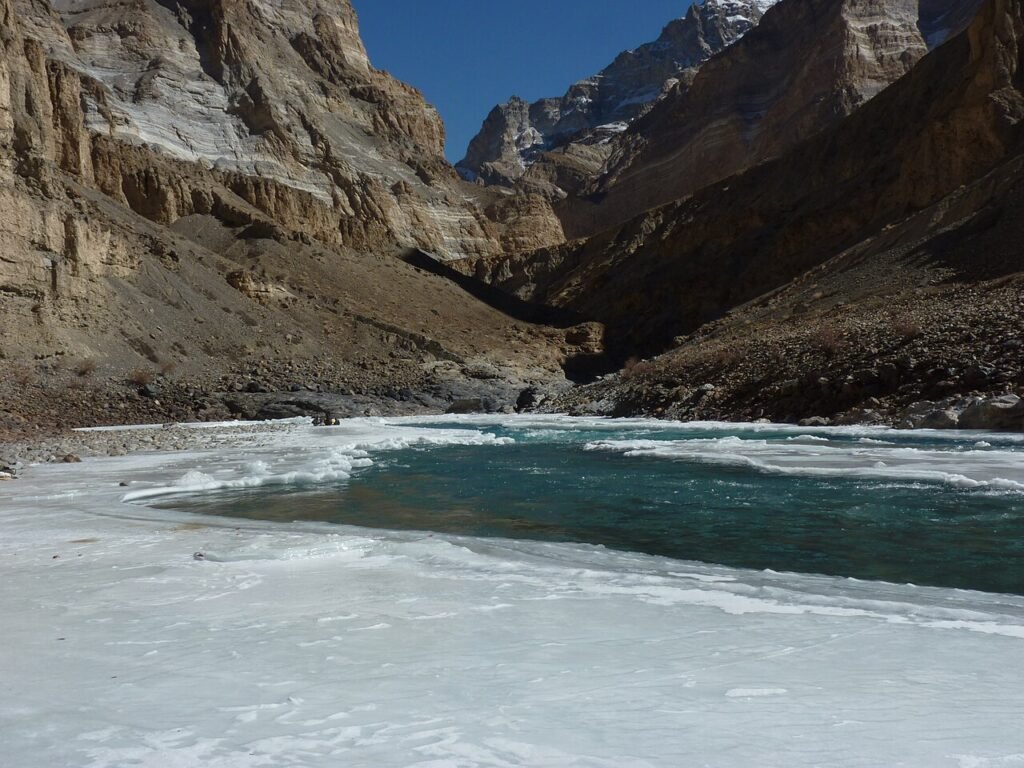
This is not a trek you can rush. The itinerary is designed around one critical factor: acclimatization. Ignore it at your own peril.
Days 1, 2 & 3: The Crucial Acclimatization in Leh
You don’t just land in Leh (11,500 ft) in winter; it lands on you. The cold is a physical shock. The air is so thin it feels like you’re breathing at half capacity. These first three days are non-negotiable.
My Experience: I spent these days doing absolutely nothing on Day 1, as advised. On Day 2, I took a slow, deliberate walk through the Leh market, feeling the cold air prick my lungs. I visited the Shanti Stupa, where the panoramic view of the snow-dusted Stok range was breathtaking. This period is for drinking copious amounts of water, eating well, and letting your body respectfully adjust. It’s also when you’ll have your medical check-up, a mandatory step to get your trekking permit. You’ll also buy your gumboots here, your single most important piece of gear.
Day 4: Drive to Shingra Koma & The First Terrifying Steps
My Experience: I remember my guide pointing to the sheet of ice and saying, “Chalo.” My heart was pounding. That first step onto the Chadar is an act of pure faith. The ice is slick. You learn the “penguin walk” very quickly—short, shuffling steps. I fell within the first ten minutes. Everyone does. It’s a rite of passage. We trekked for just an hour or two to our first campsite. That night, sleeping in a tent at -20°C, I questioned my sanity.
The drive from Leh towards the starting point is an adventure in itself, passing landmarks like Gurudwara Pathar Sahib and the Magnetic Hill. After a few hours, the road ends. This is it.
Days 5 & 6: Into the Canyon – Trek to Tibb Cave
This is where you enter the belly of the beast. The canyon walls start to close in, and you are truly in a different world. The days fall into a rhythm: wake up to frozen everything, sip hot black tea, pack, and start walking. The scenery is constantly changing. One moment you’re on thick, opaque ice; the next, you’re on a translucent blue sheet where you can see the river flowing wildly beneath.
My Experience: Our guide was a master. He would tap the ice with his staff, listening for the right sound, guiding us away from thin patches. We learned to navigate sections where the Chadar had broken, forcing us to scramble over slippery rocks on the canyon wall. Camping at Tibb Cave was incredible—a massive natural cave that provides shelter. Sharing stories with the local Zanskari porters around a fire was a highlight.
Day 7: The Grand Finale – The Frozen Waterfall of Nerak
This is the day everyone dreams of. After a long walk, you round a corner, and there it is: the Nerak waterfall, a colossal, multi-tiered cascade frozen solid in time. It’s a magnificent, awe-inspiring sight, a testament to the power of winter.
My Experience: The waterfall was even grander than in the pictures. The ice had formed in shades of white, blue, and even a hint of green. It felt like a sacred altar of nature. We camped near the village of Nerak, the first real settlement we’d seen in days. The feeling of accomplishment was immense, but we were only halfway.
Days 8 & 9: The Return Journey – A Different River
You might think the walk back is monotonous. You would be wrong. The Chadar is a living thing. A path that was safe yesterday might be a pool of slushy water today. A new, solid path might have formed elsewhere. The return is a completely new trek, demanding the same level of attention and respect.
My Experience: The journey back felt faster, our bodies more accustomed to the cold and the walk. But we couldn’t let our guard down. We saw a section where the ice had completely collapsed, forcing us to take a long, arduous detour. It was a stark reminder of who was truly in charge here.
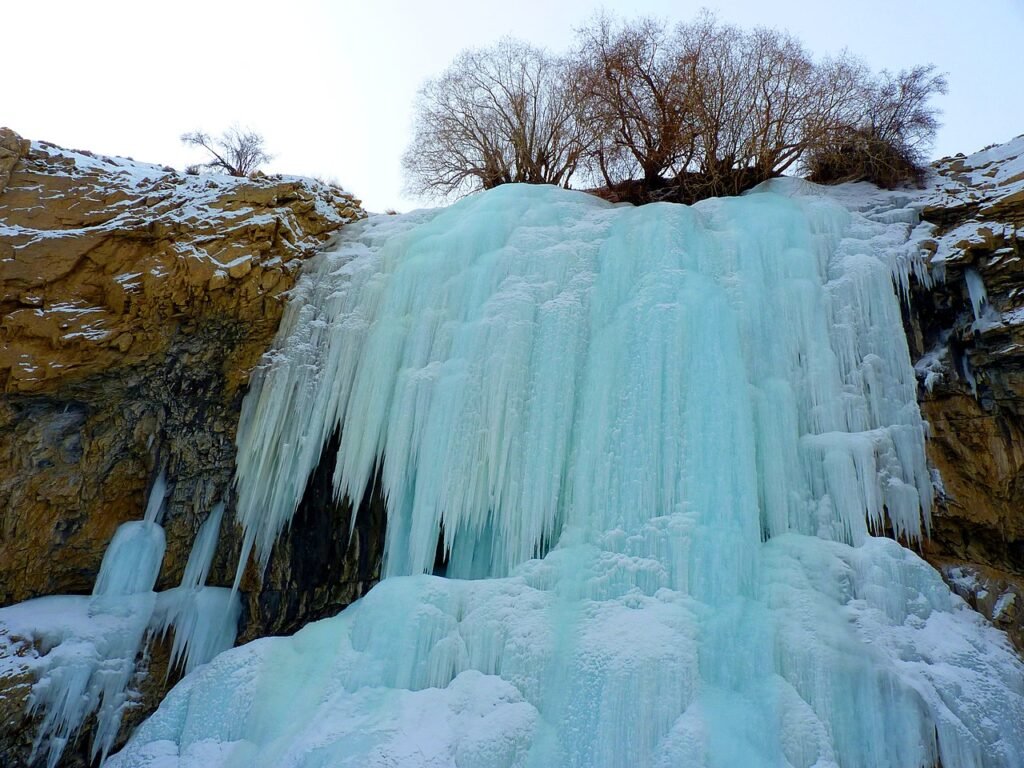
The Brutal Truth: How Difficult is the Chadar Trek?
Let me be direct: the Chadar Trek is DIFFICULT. But its difficulty is unique.
- It’s NOT a high-altitude climbing trek: The altitude is relatively low, and there’s no steep climbing.
- The challenge is the EXTREME COLD: You are battling temperatures of -20°C to -30°C for days on end. This drains your physical and mental energy in ways you cannot imagine.
- It’s a MENTAL game: Can you stay positive when you fall for the tenth time? Can you function when your water bottle freezes solid? Can you sleep when it feels like the cold is seeping into your bones?
- It is RISKY: The ice can break. The weather can turn. This is not a trek to be undertaken lightly or without a professional and experienced team.
Who should do it? People with prior trekking experience and a very high level of mental resilience.
Who should NOT do it? First-time trekkers, people with poor circulation, or anyone who is not prepared to be seriously uncomfortable.
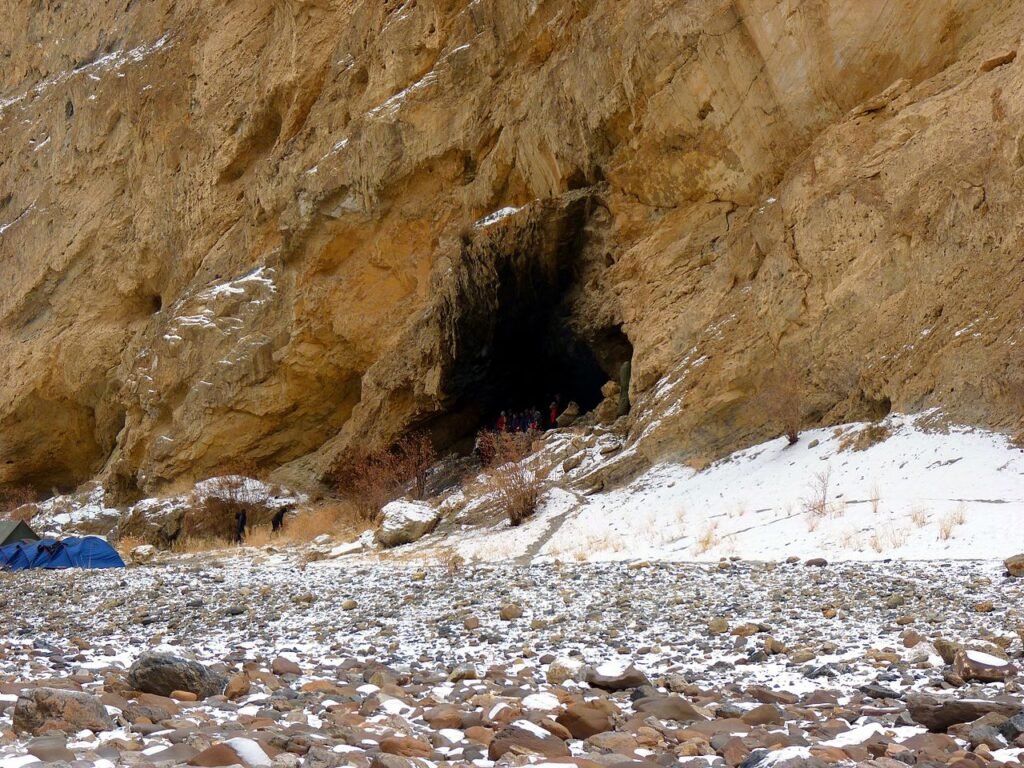
The Ultimate Chadar Packing List: Your Survival Kit
This is not a list; it’s a prescription. Do not cut corners here.
Layering is Everything (5 Layers):
- Base Layer (1-2 pairs): Merino wool thermals are best. NO COTTON.
- Second Layer (2): Fleece jackets.
- Third Layer (1): Another fleece or a light insulated jacket.
- Fourth Layer (1): Down / Padded Jacket. This is your main warmth provider.
- Fifth Layer (1): Waterproof, windproof outer shell jacket.
For Your Legs:
- Thermal bottoms, fleece pants, and waterproof/windproof trekking pants.
Crucial Accessories:
- Gumboots: Buy them in Leh. They are essential for a potential river crossing.
- Trekking Shoes: Waterproof, for use in Leh and during transfers.
- Socks (4-5 pairs): A mix of thick merino wool and synthetic socks.
- Gloves (2 pairs): A thin fleece liner pair and a thick, waterproof, insulated outer pair.
- Hats (2): A balaclava to cover your face and a warm woolen beanie.
- Sunglasses: Absolutely mandatory. UV-protected, Category 4 glasses to prevent snow blindness.
- Thermos Flask (1 litre): The only way to keep water from freezing.
- Headlamp: For the dark evenings and early mornings.
- Power Bank: Your batteries will die very quickly in the cold. Keep it close to your body.
Safety, Permits, and Insurance: The Non-Negotiables
- Permits: You need multiple permits, including a medical clearance. This is always handled by your trekking agency.
- Insurance: Your standard travel insurance won’t cut it. You need a policy that explicitly covers trekking up to this altitude and includes provisions for helicopter evacuation. It is mandatory.
- Go with a reputable agency: This is the most important decision you will make. A good agency provides experienced guides, quality gear, and has strict safety protocols. Do not try to save money here. Your life could depend on it.
Frequently Asked Questions (From My Frozen Notebook)
- Can I do the Chadar trek solo?
Absolutely not. It is forbidden by the authorities and extremely dangerous. - What about toilet facilities?
Your agency will set up toilet tents at each campsite. It’s a very basic, cold, but necessary facility. - Is there any mobile network?
Zero. There is no connectivity after you leave Leh. You will be completely cut off.
Final Thoughts: The Gift of the Chadar
Walking the Chadar is one of the most humbling experiences of my life. It strips you down to your basics. It teaches you to respect the power of nature, to appreciate the simple warmth of a cup of tea, and to trust in the wisdom of the local people who have walked this path for generations.
You don’t conquer the Chadar. You are merely granted passage. And if you are lucky enough to be granted that passage, you will return not just with incredible photos, but with a new perspective on your own strength, resilience, and your place in the wild, beautiful, and unforgiving world. It’s not a trek; it’s a pilgrimage on ice.
Image credit: By Atulbhats


